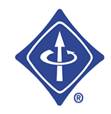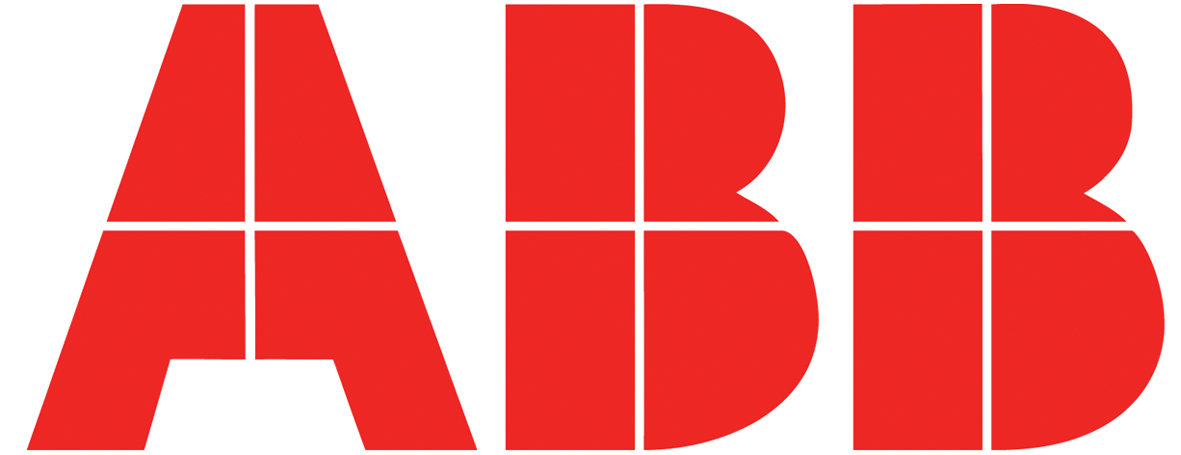 |
6th IEEE Conference on Automation Science and Engineering |  |
| CASE 2010 Toronto, Canada August 21-24, 2010 |
| Automation at the Microscale and Beyond Prof.. Sylvain Martel, École Polytechnique de Montréal, Montréal, CANADA
The manipulation of micro- and nano-components offers new technological challenges especially when precise assembly tasks must be performed. In general, these highly precise manipulations are often tedious and require relatively long execution time. As such, automation can play an important role allowing the implementation of more efficient micro- and nano-assembly platforms. This workshop aims at presenting the state-of-the art in automation and related topics applied at the micro- and nanoscale. Presentations: Force Observation and Force/Position Control of a Micromanipulation/
Microassembly System The automation of a system dedicated to micromanipulation and microassembly tasks is addressed in this talk. While the system is based on piezoelectric actuators, reduced number of sensors is used due to the lack of convenient force sensors. As a result, observer techniques are used to provide estimate values of the forces. The signals provided by the force observer and by the displacement sensors are afterwards used for a robust feedback control techniques, the aim being the automation of the micromanipulation/microassembly system. The experimental results prove the efficiency of the combination of observer techniques and the robust control techniques in the microworld applications. Automated Planning for Micro and Nano Manipulation Ashis Gopal Banerjee, Massachusetts Institute of Technology, USA A number of manipulation techniques using grippers, atomic force microscopes (AFM), magnetophoresis, dielectrophoresis, and optical tweezers are becoming increasingly popular for biological studies and assembling micro and nano scale objects to make functional devices. However, automation remains a challenge despite rapid advances in imaging and fabrication at the small scales. Planning the motions and sequences of objects to be manipulated forms an integral part of any automated system. This talk will provide an overview of the state-of-the art in automated planning with particular emphasis on our work using optical tweezers. We have developed a real-time path planner for optical manipulation of microspheres by modifying an approximate partially observable Markov decision process algorithm. Real-time performance is ensured by pruning the search space and enhancing convergence rates by introducing a non-linear value function. The algorithm is validated both using a simulator as well as a physical holographic tweezer set-up. Successful runs show that the automated planner is flexible, works well in reasonably crowded scenes, and is capable of transporting a specific particle to a given goal location by avoiding collisions either by circumventing or by trapping other freely diffusing particles. This technique for transporting individual particles is also utilized within a decoupled and prioritized approach to move multiple particles simultaneously. I will conclude by outlining possible future directions of work in this exciting area of research. Nanomanipulation and Sensing on a Chip Fumihito Arai and Hisataka Maruyama, Nagoya University, JAPAN Manipulation and sensing in nano-scale have been widely investigated and developed in the academic and industrial fields. In this talk, the current issue and future direction of manipulation and sensing in nano-scale will be presented. As biological applications, single virus manipulation in a cell existing environment is required to analyze the functions of the virus before and after infection to a cell. Intracellular measurement of the infected cell is also important. We have proposed On-Chip Robotics for biomedical innovation by integration of nanomanipulation and sensing in a microfludic chip. We developed manipulation of single virus in the chip and a nanotool for intracellular measurement in the chip. The chip has a virus chamber and cell chamber to divide cells and viruses. Shingle virus in the virus chamber was transported to the cell chamber by optical tweezers. These chambers were separated by microchannels to avoid an incursion of extra viruses to the cell chamber. After transport of the virus, these chambers could be isolated by photo-crosslinkable resin. We succeeded in infection of the single virus to a specific cell. We also developed nanotool for intracellular measurement. The nanotool impregnated with the fluorescent dye was included in a fusogenic liposome. The nanotool included in the liposome was manipulated by optical tweezers and contact to the target cell. Nanotool was injected to the cell by optically induced membrane fusion for selective cell injection. We succeeded in measurement of the local temperature in the cell by fluorescent measurement and manipulation by optical tweezers. The on-chip nanomanipulation and sensing will make a great contribution to biomedical applications in the future. Automated Mechanical Measurement of Living Plant Cells in situ Brad Nelson, ETH Zurich, SWITZERLAND Microrobotics has proven itself to be an invaluable paradigm for measuring the mechanical properties of individual living cells such as mouse oocytes and embryos, zebrafish embryos, HeLa cells, and stem cells, ex vivo. However, molecular biologists also have a deep interest in understanding the mechanics of how a cell interacts with its surroundings as a cell forms and matures. Therefore, the next step along this research path is to investigate how the mechanical properties of individual cells change within entire living, growing organisms, i.e. in situ measurements of individual cells. The challenge for microroboticists is to develop systems capable of recognizing the changing morphology of a cell and its host organism during growth, and to appropriately gather mechanical measurements during these changes. In this talk I will discuss our recent work in developing automated microrobotic systems capable of measuring the membrane stiffness of individual plant cells that are continuously growing and the challenges we have encountered along this path. Nanomanipulation System and Toolsets for Manipulation inside Scanning Electron Microscopes Yu Sun, University of Toronto, CANADA Efficiently manoeuvring individual nanomaterials into pre-defined positions and accurately characterizing mechanical and electrical properties of individual nanomaterials are important for guiding the synthesis of nanomaterials and for prototyping nanoelectromechanical systems (NEMS) – devices integrating electrical and/or mechanical components with critical dimensions less than 100nm. Mechanical nanomanipulation promises specificity, precision, and programmed motion; and might be used in combination with chemistry-based assembly and dielectrophoretic nanomanipulation for large-scale nanomanufacturing. In this context, we are developing a novel nanomanipulation system and MEMS (microelectromechanical systems)-based tools to realize autonomous nanorobotic manipulation. Visual servoing and position control algorithms are integrated into the nanomanipulation system for the manipulation of 1D and 3D nanomaterials. Examples that will be discussed in this presentation will include probing of nanowires/nanoelectronics, pick-place of nanospheres, and the extraction of sub-cellular structures from biological cells. New Precision Metrics for Multiscale Robotics Dan Poppa, University of Texas at Arlington, USA Micro and nano scale assembly are enabling technologies for manufacturing that offer a higher degree of robustness and more complexity than monolithic fabrication. The success of assembly in small-scale domains is directly related to the level of precision automation employed, which, in turn, harbors many difficult challenges due to scaling of physics, stringent tolerance budget, high precision requirements, limited work volumes, and so on. These difficulties warrant new control and planning algorithms, different than their macro-scale counterparts. In this presentation, we use new precision metrics to formalize a hybrid controller for automated MEMS assembly, switching between open, closed, and calibrated operation in the assembly cell. Simulation and experimental results for the assembly of a microspectrometer are presented to indicate that the proposed hybrid controller leads to guaranteed higher yields at faster cycle times. High-speed Pick and Place Handling of Micro- and Nanoobjects Daniel Jasper, University of Oldenburg, GERMANY In recent years, the successful automation of pick and place handling of both micro- and nanoobjects has been demonstrated by multiple research groups. In order to make these processes viable for industrial applications, high-speed and high-throughput systems need to be designed. Such a system will be presented in this talk. Using hardware-based sensor evaluation for both camera- and SEM-based position detection, the high-speed closed-loop positioning of mobile nanohandling robots is implemented. Based on this positioning, automated handling of microspheres with a speed of more than one pick and place operation per second is achieved. MEMS-Based Scanning Tunneling Instruments for Atomically Precise Manufacturing Jason J. Gorman, National Institute of Standards and Technology, USA Scanning tunneling microscopy (STM) is one of the best methods for imaging conducting materials at the nanoscale and can achieve atomic resolution on specific single crystal materials. A number of researchers have strived to leverage this exceptional precision to develop nanoscale fabrication processes based on the interaction between the STM tip and the sample. Many of these processes use the tunneling current for lithography, which has been shown to be capable of writing patterns that are the width of a few atoms. One pitfall of these STM lithography techniques is that they have severely limited write rates making them impractical for most applications. A MEMS-based STM scanner could be used to increase the write speed and the use of scanner arrays could significantly increase the overall throughput, thereby making STM lithography more practical for production-scale nanofabrication. We are developing MEMS-based STM scanners for a specific nanofabrication process that may possibly be capable of producing atomically precise nanostructures. The design, characterization, and control of these mechanisms will be presented along with plans to fully integrate these scanners into the atomically precise manufacturing process. 9. Towards Automatic Bacterial Micro-assembly Sylvain Martel, École Polytechnique de Montréal (EPM), CANADA Flagellated magnetotactic bacteria (MTB) can be used as computer-controlled bio-actuators acting like biological or natural microrobots of less than 2 micrometers in diameter to accomplish precise coordinated micro-assembly tasks. Indeed, magnetotactic bacteria have a chain of nanoparticles referred to as magnetosomes that acts like a nano-compass needle. Using a special platform based on several coils, it is possible to induce a directional torque on the chain of magnetosomes and hence control the swimming direction of the bacteria. Through complex magnetic field patterns, it is then possible to control a swarm of several thousands bacteria to execute coordinated tasks. Since the flagella bundles of each bacterium of type MC-1 provide a thrust force between 4.0 and 4.7 pN, the total thrust force can be scaled up with a larger number of bacteria. It was demonstrated experimentally that a swarm of such flagellated bacteria could assemble polymer block for the construction of diverse structures such as a miniature pyramid. These demonstrations suggest the possibility of using self-reproducing micro-actuators in the form of bacteria for the implementation of computer coordinated assembly tasks in future micro-factories. 10. Microhandling and microassembly with robot and self-alignment Quan Zhou, Aalto University, FINLAND Microhandling and microassembly are important technologies for integration of microsystems. This talk addresses a recent trend in microhandling and microassembly that joins robotic tools and self-alignment, or hybrid microhandling and microassembly technology. Such hybrid approaches bypasses persistent adhesion problem of robotic microhandling, and has much greater freedom of operation compared to traditional self-assembly. After background discussion on automatic robotic microassembly and self-assembly, droplet-assisted hybrid microhandling will be discussed, including the basic principle, technical demonstration on the capability and reliability of the hybrid approach, and the application in the assembly of RFID chips and other applications. The talk will also discuss different technical branches of the hybrid approach, and important parameters that affect the performance and the applicability of the processes. |



